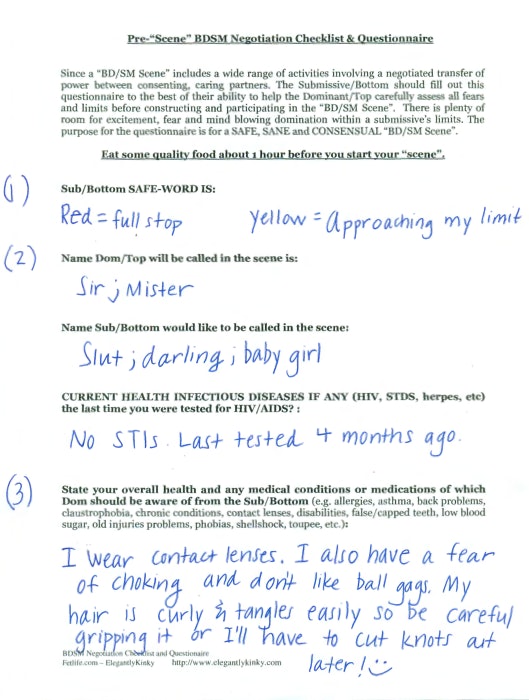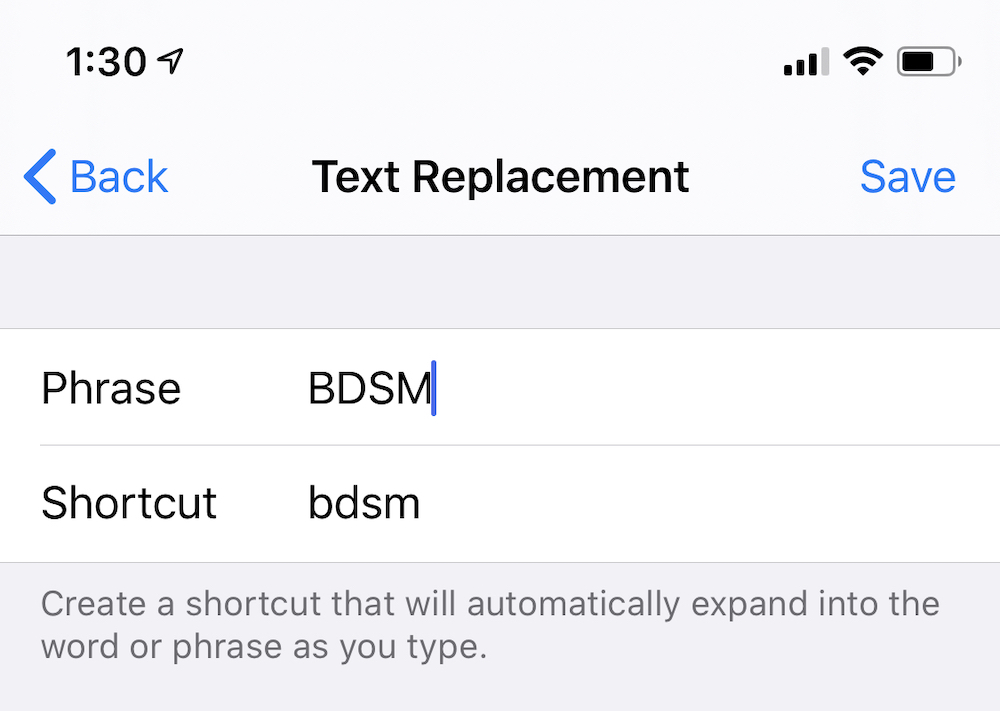

To ensure you and your partner enjoy a particular activity, identify and assign a safe word to use for your BDSM activity.

If there’s stuff you aren’t sure about but are willing to consider, make a note of that along with any boundaries you would need to make it work for you.ĭepending on whether you enjoy being dominant, submissive, or a switch, you can make a checklist pertaining to that including how dominant or submissive you want to be.

This is where, after talking to your partner, take note of what parts of your checklist they are willing to participate in. Are you curious about vibrators? Chastity play? Sex swings? Whatever it is, put it in. This includes stuff you want to try that doesn’t fit any of the categories above. They might be body parts, objects, or actions, like in the case of foot fetishists who may also get turned on by shoes or watching someone put on or take off a shoe. These are things that get you extremely turned on, and for some folks, things they can’t get turned on without. This is a fabulous opportunity to let your potential partner(s) know exactly what you enjoy. These are sexual preferences that might be considered non-normative. Are there any bondage positions or BDSM games you’re uncomfortable with or enjoy doing? Include that as well. If you are okay with your arms being restrained but not your legs, make note of that. This is where you communicate your boundaries. You can always add more if you find something outside of our list that interests you. Other than including adult sex toys or bondage equipment, a wide variety of BDSM activities and desires should also be covered. If you’re ready to make a BDSM checklist but aren’t sure what to add, the following sections contain some details that you may want to consider. Creating a checklist for your BDSM contact is an opportunity to ask yourself about your likes, dislikes, boundaries, and desires and take some time to figure out the answers. BDSM checklists are an important way to foster honesty, openness, and effective communication about stuff- like a fetish or kink - that many people find difficult to talk about.Īdditionally, BDSM checklists can help us learn more about ourselves. Safe and enjoyable BDSM requires a lot of communication, and BDSM checklists can be great conversation starters. There are a ton of different ways to execute a BDSM checklist (you can even use a template to get you started) but the goal remains the same: to provide a way to organize each participant’s thoughts, limits, emotional responses, and boundaries when it comes to BDSM-related activities. It’s more of an organized guide to one's feelings about specific BDSM activities. So, let’s talk about BDSM checklists!Ī BDSM checklist is a tool that BDSM practitioners of any experience level can use to lay out preferences, boundaries, kinks, fetishes, the activities they like (or are curious about) and more. It can help you be clear on what you want and how you want it and to communicate that effectively. If it’s true for stuff like grocery shopping, moving, DIY projects, and even vacations, why wouldn’t it be true for our sex lives? A BDSM checklist can be an amazing way to explore, communicate, and experiment. When you’re planning anything, checklists can be an invaluable way to make sure you do everything you want to do.


 0 kommentar(er)
0 kommentar(er)
